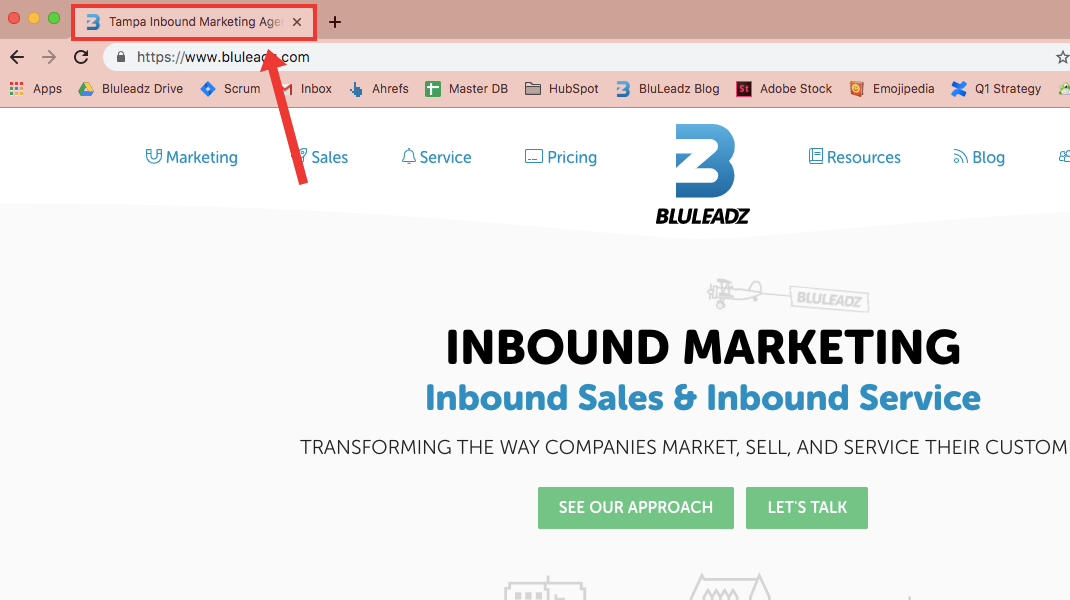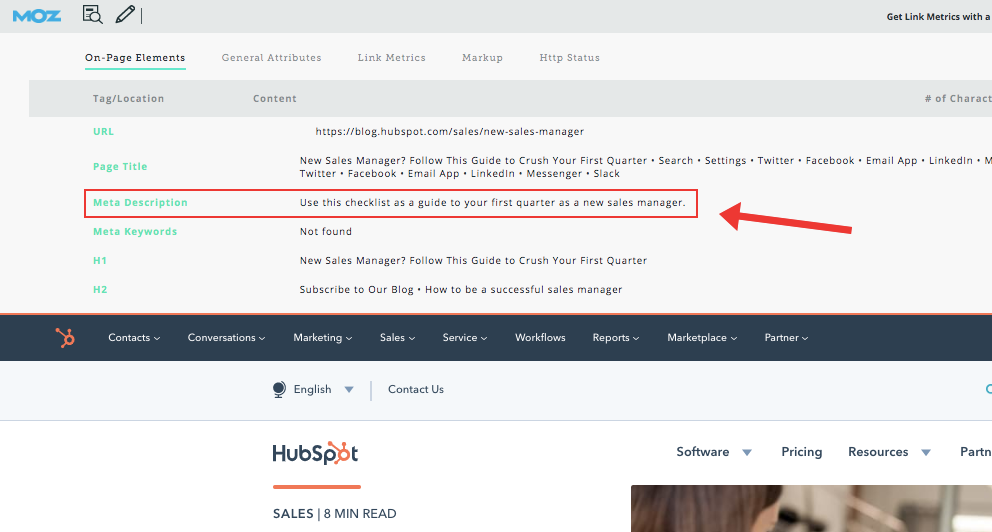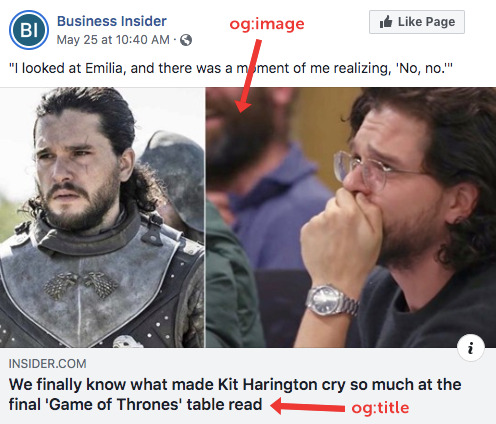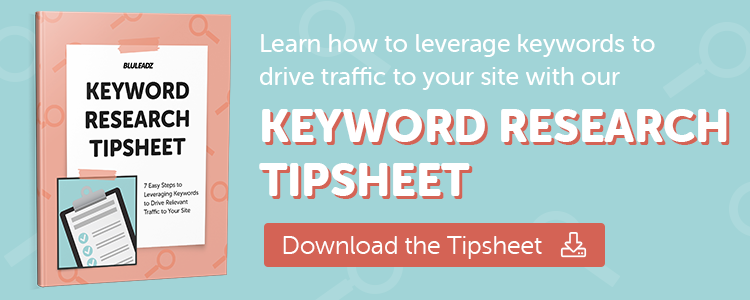You've heard us talk about SEO time and time again and how you should always aspire to hit that #1 SERP position.
But have you ever stopped to think about what exactly Google does to know just what is on your page and how it knows what to display in the search results?
While it sounds creepy – because Google knows just about everything we do nowadays – there are a few things you should be adding to your code to help search engine crawlers better understand what your website pages are about.
And they're called meta tags.
What the Heck Is a Meta Tag?

Meta tags are short snippets of text that describe a webpage. They hide in the shadows – meta tags don’t actually appear on the page but are rather placed in the page’s HTML code.
These might sound similar to blog tags, which also help search engines understand a webpage.
But, like I mentioned before, you can’t actually see meta tags. Rather, they’re typically placed at the “head” of a page so search engines can see them and collect data about what’s on your page.
How Meta Tags Help SEO
Although hidden to the human eye, meta tags are actually beneficial to your SEO, as it helps search engines indicate the context of a webpage
There are a handful of meta tags you can use, but not all meta tags are necessary or useful.
You should only include the ones that will help search engines understand your content and improve how people see your site pages on a search engine results page.
How to Check Meta Tags on a Website
Remember when I said you can’t see meta tags on a page? Well, I kind of lied.
Yes, you can’t find meta tags when you have any website page open. But, by checking the page source, you actually can! Here’s how:
1. Head to any website page of your choice.
2. Right click on the page.
3. Click View Page Source. A new tab will open up.
4. Voila! All the meta tags that have been added to this page can be found here.

There are also a handful of free, easy-to-use tools that can pull the meta tags from any website just by copying and pasting in a URL. Some of these tools include:
- Small SEO Tools’ Meta Tag Analyzer
- Hey Meta
- Open Graph Check
Types of Meta Tags (With Examples) and How to Use Them for SEO
When it comes to meta tags, there are some key tags to include, and a few that aren’t necessarily required or needed. Let’s check them out.
Essential Meta Tags
Meta Content Type
A meta content type tag should be on every page. It defines your character set and instructs the browser on how to read/parse the file.
<meta http-equiv="Content-Type" content="text/html; charset=utf-8"/>
In this example, the meta content type tag is indicating that the page is an HTML page and that the character set is utf-8.
Title
So, the title tag isn’t necessarily a meta tag, per se, but it does exist in the header and can heavily influence your SEO rankings.
Your title tag is what the user will see on your website tab next to your logo or website icon. For example, on the Bluleadz homepage, our title tag reads, “Tampa Inbound Marketing Agency | Bluleadz.”

Most CMS platforms will automatically insert your title tag into your source code when you create it, so you don’t have to worry about manually adding it into your <head> HTML.
Remember to create a unique title tag and include your most important keywords for each website page, as page titles play a key role in SEO.
Meta Description
A meta description is a short description of what your page is about. While it doesn’t influence SEO ranking, it is what persuades a user to click on your page.
Meta descriptions appear under the URL in a search results page and are truncated by the search engine if too long.

However, note that Google’s algorithm might replace your meta description with another portion of content on a page if it seems more valuable. (Google knows best, after all.)
Like title tags, most CMS platforms automatically add your meta description tag to your code. If it doesn’t (like WordPress, for example), you can install plug-ins to help you add your meta description tag. Yoast and All-in-One SEO are two of the most used plugins for WordPress websites.
You can also view the meta description for a particular page with Chrome extensions like MozBar from Moz. With this plugin, you can easily identify on-page elements like the URL, page title, meta description, and headers.

Viewport
Ever loaded a website page on your phone only to realize it’s not scaled properly and you have to move around the screen to find what you need?
Yep, that website page forgot to add a viewport meta tag.
The viewport meta tag is what makes websites responsive when used on different devices. Standard viewport tags look something like this:
<meta name="viewport" content="width=device-width"/>
Canonical
A canonical tag is kind of like a bucket tag that informs search engines which URL should be prioritized if the content on that page is available on more than one place on your site.
The syntax for a canonical tag looks like this:
<link rel=”canonical” href=”http://example.com/”/>
A great example of when you might use a canonical tag is for blog listing pages. When you have more than one blog listing page, each page will have the same meta description and page title.
Without a canonical tag indicating the preferred URL (ideally, the main blog page), then Google might flag these multiple pages as duplicate content and ultimately penalize you for it. Harsh!
Robots
Robots? Yes, robots. The robots meta tag tells web crawlers which webpages to index, not index, follow, and not follow. Here's a breakdown of what these options mean:
- Index: The crawler will index the page, and it can appear in search results.
- Noindex: The crawler will not index the page, and it won’t be added to the search results index.
- Follow: The crawler will follow any links that exist on the page.
- Nofollow: The crawler will not follow the links that exist on the page.
Robots meta tags are basically a way to control the all-powerful search engine spiders!
You can use the syntax meta name="robots" if you wish to apply your rules to all search engine crawlers, or you can specify which crawler – also called user-agents – you wish to add your index and follow rules.
For example, if you want to add a nofollow rule for Ahrefs, you can add <meta name="ahrefs" content="nofollow" /> to your header.
Open Graphs
Open graph meta tags are used for social media shares to promote integration between Facebook, LinkedIn, Google and the website links you share.
These are the five most frequently used open graph tags when sharing to these platforms:
- Og:type – describes what type of content you are sharing. The most common for business is blog, website, and article.
- Og:url – defines the URL of the content you’re sharing.
- Og:title – indicates the title of the content you’re sharing.
- Og:description – fairly similar to a meta description. It describes what the content is about and should be written to attract clicks.
- Og:image – ensures an image is attached to social shares to attract attention with visuals.
Let's look at an example of these open graph tags. If I were to share the article "Why You Need to Add Paid Search to Your Digital Advertising Strategy" to Facebook, what would the open graph meta tags look like?

<meta property=”og:type” content=”article”/>
<meta property=”og:url” content=”https://www.bluleadz.com/blog/why-add-paid-search-digital-advertising”/>
<meta property=”og:title” content=”Why You Need to Add Paid Search to Your Digital Advertising Strategy”/>
<meta property=”og:description” content=”If you're wondering how to bulk up your digital advertising strategy, paid search marketing is the way to go."/>
<meta property=”og:image” content=”https://www.bluleadz.com/hubfs/Blog_pics/paid-search-advertising.png"/>
Here is what a social share card looks like on Facebook. As you can see, this particular blog has included an image OG tag as well as a title OG tag.

Not-So-Essential Meta Tags
I don't want to go into too much detail about the non-essential meta tags, well, because we don't think they are necessary for every website page!
But, in case you're dying to know, here's a quick list of the meta tags you shouldn't worry about:
- Generator: This is actually BAD. Don't use this meta tag.
- Copyright: This is already at the footer of every website page.
- Keywords tag: Google doesn't use this to rank pages.
- Geo meta tag: Google doesn't use this to rank pages.
- Site verification: Verify your site with Google Search Console.
It's Time to Meta Better
Now that you know your meta tag differences, you're ready to optimize your webpages for search!
Make sure your SEO is top-notch by double checking your meta tag use – let the search engines better understand what's on your page so they can better educate users and entice them to click on your result!


Baylor Cherry
Baylor is an inbound specialist for Bluleadz. As a native Floridian, she enjoys soaking up the Florida sun, buying clothes she can’t afford, and dreaming about one day owning a dachshund.